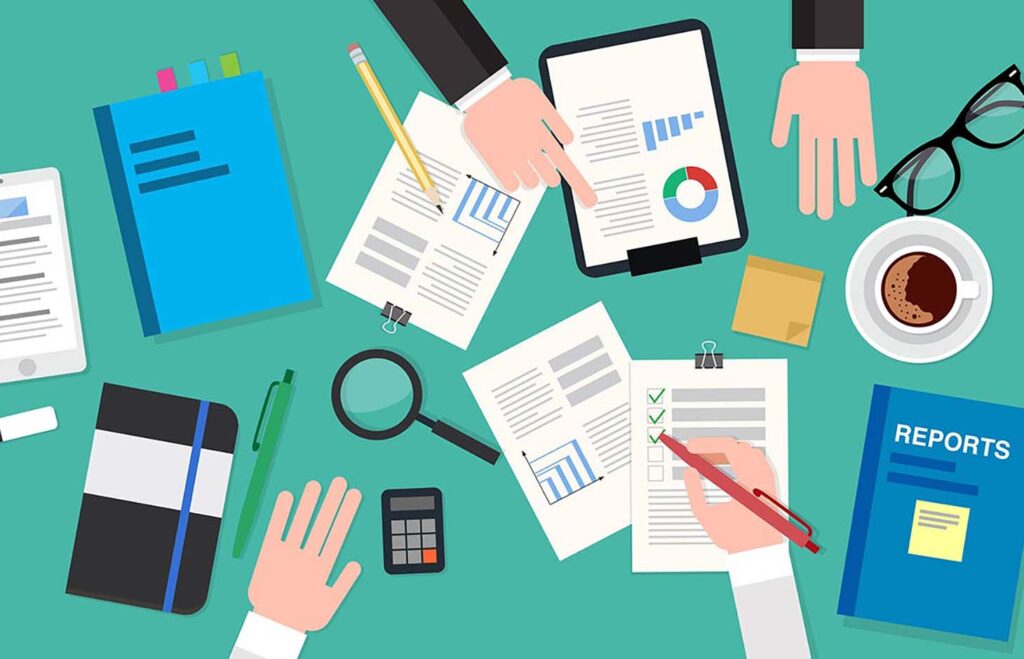Good billing software should really be capable of handling more than just simple invoicing automation.
For example, integration. You want your billing platform to connect with your ERP for operational efficiency, right? Oh. And ideally, it’ll ensure your business doesn’t make splashy headlines for ASC 606 compliance failures.
Ledger-based billing automation software checks these boxes and more, increasing operational efficiency and improving processes in a way that can be felt company-wide. Not only do GL systems go deeper into your accounting functions, but they also produce clean data that can be vital for upper management, shareholders, and even accountants wishing to produce an audit-proof paper trail.
1. Simplifies revenue recognition
ASC 606 compliance continues to be one of the biggest headaches for subscription-based businesses the world over. Even businesses that have ASC 606 resources in place may struggle with manual heavy elements of the process that invite error and waste a significant amount of time that could be better spent on other things.
Since ASC 606 is a regulation that could result in stiff financial penalties and even jail time, it’s important to have as much support for handling it as possible. Ledger-based billing simplifies the process by:
- Immediately recognizing revenue: For businesses that provide a combination of physical and service-based goods (such as IoT) recognition becomes even more complicated than it already was. The sale of the physical good should be recorded as earned revenue in real-time, while the subscription fees are recognized on a schedule. Ledger-based billing software can distinguish between the two, automating an important aspect of compliance and saving time in the process. Not only does this save a significant amount of time, freeing your billing and financial departments up for more important tasks, but it also reduces the potential for error.
- Handling interval recognition: One of the main benefits of the automated billing system in the context of ASC 606 compliance is the ability to establish automatic interval-based recognition at the schedule of your choosing. By automating this process, you can recognize revenue up to the minute in an ASC 606-compliant manner—a feature that drastically reduces your chances of making a mistake that could result in stiff fines and public embarrassment
- Handling milestone recognition: Ledger-based billing software also allows for the automated handling of milestone-based recognition. This process is complicated because it isn’t standardized the same way interval-based revenue recognition is. Instead of recognizing revenue at the end of a service period, entries may be made for milestones as defined by project scope, such as the receipt of the first payment, or the end of month one. This method is usually used for situations where performance obligations are met irregularly.
- Offering an ASC 606 compliance module: Finally, good automated billing software will feature a built-in ASC 606 compliance module through which you can tune account information to your needs and allow the billing platform to handle the compliance parameters from there. ASC modules are set with language that is specific to ASC compliance to avoid the possibility of confusion and can be integrated directly into your ERP to ensure that your fintech stack ledgers are perfectly balanced across the board.
Some tasks cannot or should not be automated. In cases where, for example, you are charging customers a deposit, manual entry options are there to provide your billing department with the level of control they need to remain compliant and provide quality service.
2. Handles multiple types of transactions
A good ledger-based automated billing system is also able to handle multiple types of transactions. Not everything that gets logged in your ledgers will be a sale. Businesses will also need to handle:
- Refunds
- Account credits
- Write-offs
Whatever the situation, good billing software is there to process it and document it accordingly. Dual ledger billing processes keep your paper trail intact no matter what kind of edits you make. In the event of an audit, your billing automation software provides you with an easy way to verify your financials.
According to GAAP, it’s better to have multiple edits to an older invoice than to have that invoice deleted and a new one created in its place. With manual billing processes, this can be messy, challenging, and error prone.
Recurring billing software with a GL foundation automates the documentation neatly in accounting language.
3. Easily integrates with your accounting platform or ERP
A good automated billing system will easily integrate with your ERP, making it easy to keep up-to-the-minute data synced between multiple tools. Over 80% of business leaders say the ability to integrate data is a key component of success going forward.
Without data integration, information is frozen within the various platforms it was entered into. Sales data remains stuck in the CRM. Financial information is kept tucked within the caverns of fintech, and so on. When other departments need to access this information, they are forced to do so manually, through re-entry, or even verbal communication.
Ledger-based billing software provides a clean stream of well-documented information that can be funneled directly into your ERP. Not only does this make daily operations between departments simpler, but it can also be vital at the macro-level, allowing senior management and shareholders to access reports in the dashboards they are most comfortable with.
It’s worth noting that good automated billing systems can also serve as a dependable single source of truth in their own right, tearing down data siloes and increasing operational efficiency across departments. However, for the many businesses that are simply folding their billing systems into a much larger tech stack, the ability to integrate is vital.
4. Automated billing solutions natively speak the same language as your accountant
Finally, in addition to simplifying your entire billing process, ledger-backed billing systems also “speak” the same language as your accountant. In other words, your automated billing solutions should use official language that any certified accountant will be able to readily interpret.
Not only does this make the billing process easier during the end-of-month closing, but it’s also important in the event of an audit.
A time-tested solution that works
Ledger-based accounting is nothing new. It’s a system that has been developed and refined over the centuries. Do you know how many thousand-year-old concepts are playing a significant role in 21st-century subscription billing? It’s a long list.
Your billing automation solution needs ledger-backed support for the simple reason that it works. From integration to revenue recognition support, it’s a system that simplifies and improves key business processes by providing a clean, easily accessible record of your transactions.








